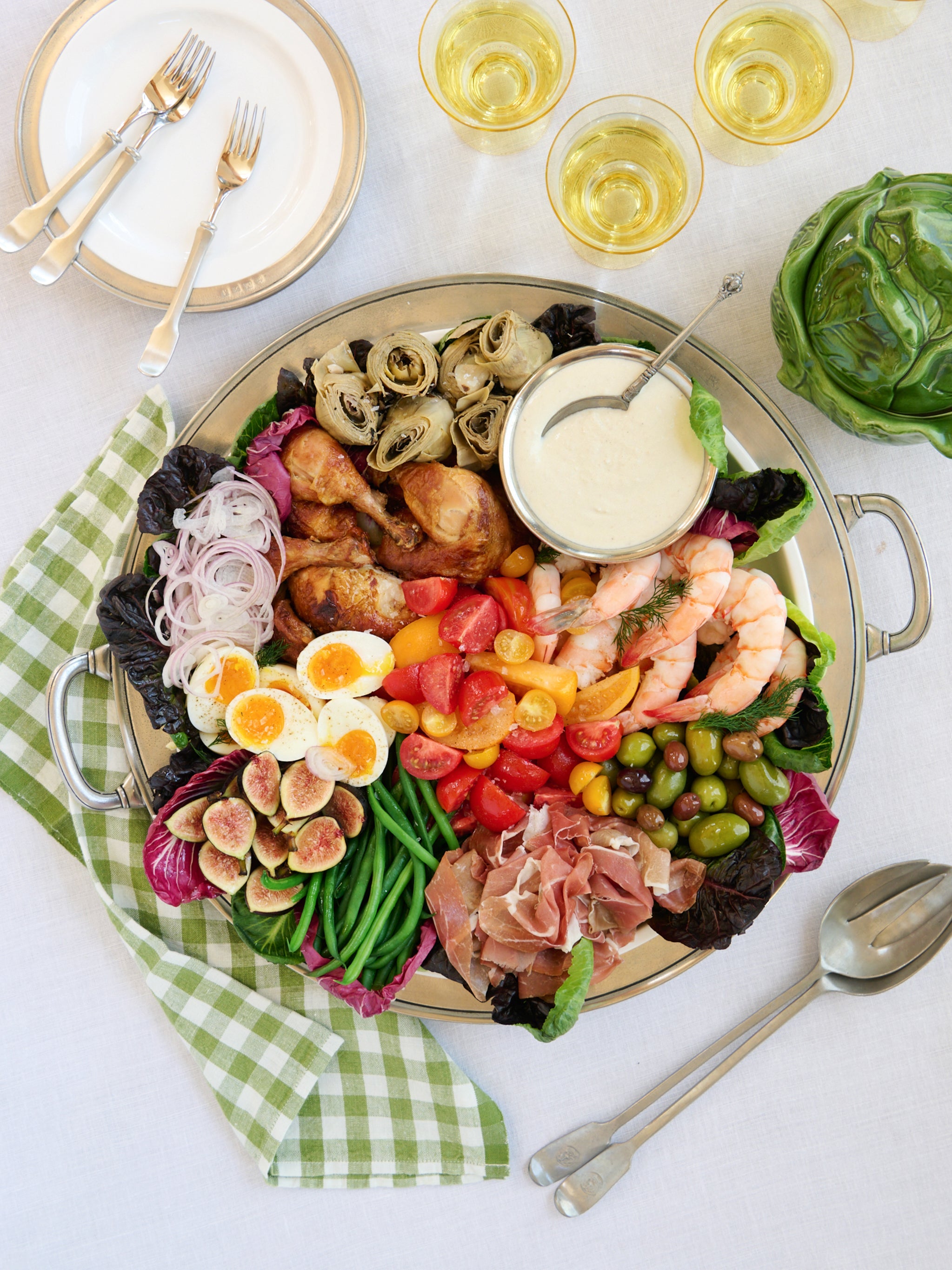Salmagundi
salamagundy, sallid magundi
Salmagundi is a cold dish or salad made from different ingredients which may include meat, seafood, eggs, cooked and raw vegetables, fruits, or pickles. In English culture, the term does not refer to a single recipe but describes the grand presentation of a large plated salad of many disparate ingredients. These can be arranged in layers or geometrical designs on a plate or mixed. The ingredients are then drizzled with a dressing. The dish includes a wide range of flavours and colours and textures on a single plate. Often recipes allow the cook to add various ingredients which may be available at hand, producing many variations of the dish. Flowers from broom and sweet violet are often used. There is debate over the sense and origin of the word. The word salmagundi may be derived from the obscure 16th century French word salmigondis which means disparate assembly of things, ideas or people, forming an incoherent whole. It may also come from the Italian phrase salami conduit (pickled meat). In Thomas Blount's Glossographia (1656), salamagundi is described as "a dish of meat made of cold Turkey and other ingredients". Helen Sabeeri points out that the essential root word of salmigondis is 'sal- (salt or seasoning) and that the dish is 'usually a fish of some sort'. It seems to appear in English for the first time in the 17th century as a dish of cooked meats, seafood, vegetables, fruit, leaves, nuts and flowers and dressed with oil, vinegar and spices. Salmagundi is used figuratively in modern English to mean "any miscellaneous mixture or assortment." Late in the seventeenth century, the name salmagundi was applied to the grand salads of large houses. These compound salads descended from medieval herb and flower salads. Raw salads, according to food historian C. Anne Wilson, 'had never come under the same sort of disapproval as fresh fruit, partly because so many salad plants were thought to have medicinal properties. Moreover, in a skilfully mixed salad, aromatic herbs noted for their warm, dry qualities, could counteract the coldness of other kinds, such as lettuce, purslane or endive'. During the reign of Elizabeth I fruits and vegetables and hard-boiled eggs were added to them.
Source: Wikipedia
Recipes






:max_bytes(150000):strip_icc()/2681901_Salad_Salmagundi_205-8dee8fa87ea9402e852e547ca342fd72.jpg)


